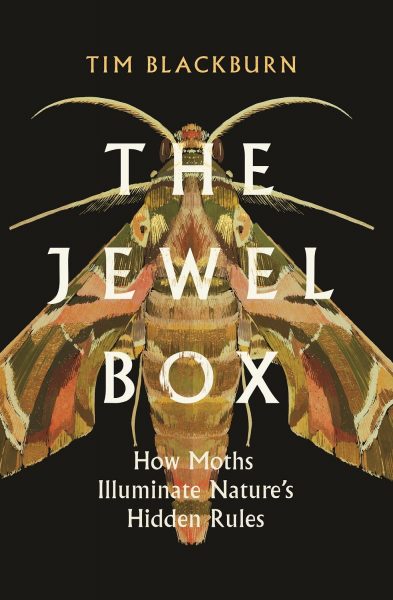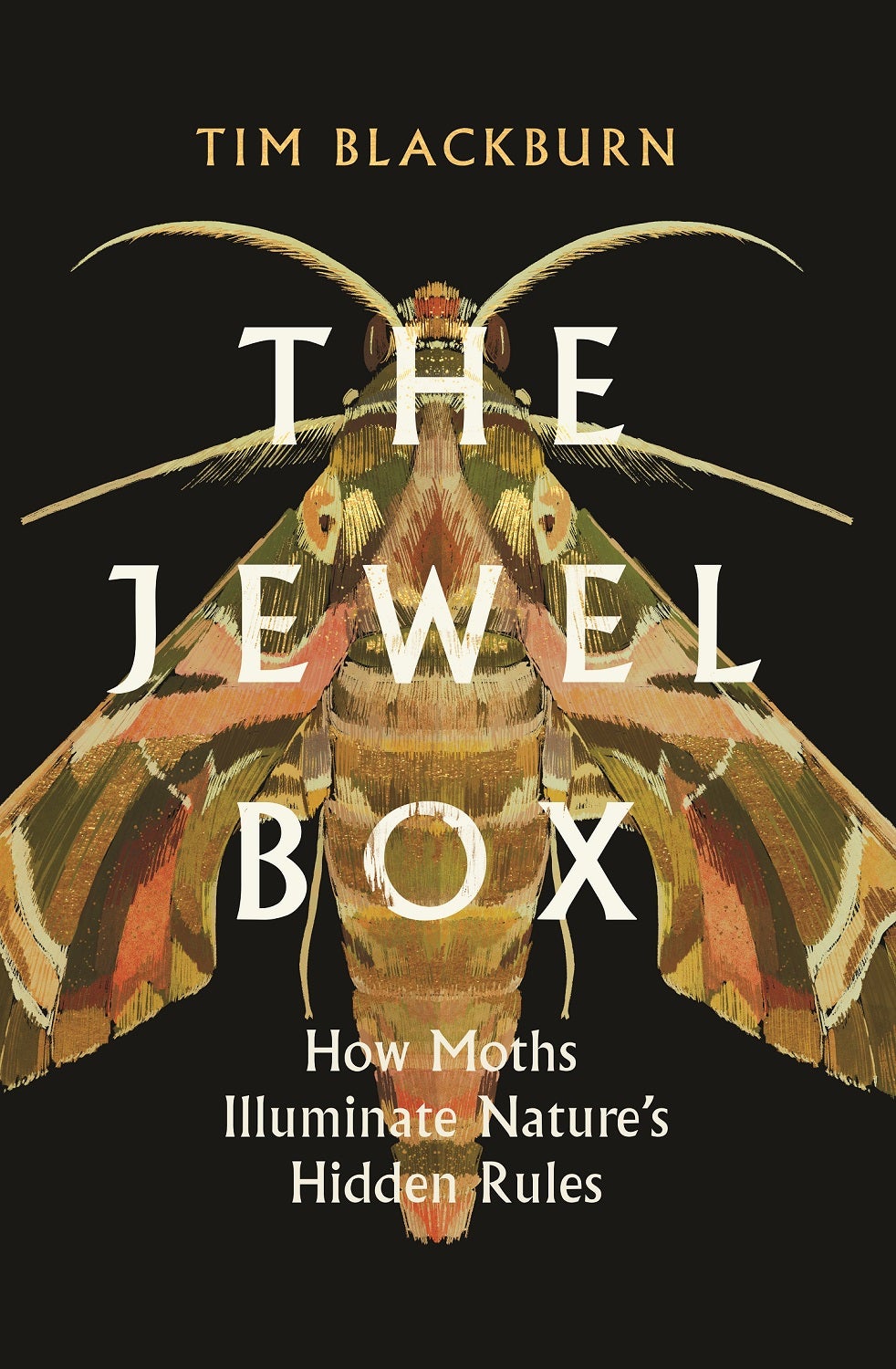How migration makes life more resilient

Excerpted from The Jewel Box: How Moths Illuminate Nature’s Hidden Rules by Tim Blackburn. Copyright © 2023. Published by Island Press.
The composition and structure of ecological communities doesn’t only depend on what happens in their immediate vicinity. Events in the wider environment are important, too. All of nature is connected. This is why migration matters.
Indeed, migrants have never mattered so much. Humanity has destroyed a substantial proportion of natural habitat worldwide, and much of what is left is now heavily fragmented—small islands in a sea of inhospitable cropland, pasture, or concrete. The populations they house will be small, too, and susceptible to the vagaries of bad
luck. Luckily, as we’ve seen, fragmented populations can still persist if they are connected by migrants. Migrants can bolster birth rates and counteract death rates, preventing population extinction and recolonizing sites when local extinction does take populations out. Humanity’s fragmentation of nature has only increased the relevance of these dynamics.
Migration can ameliorate some of the damage caused by fragmentation, but only some. Metapopulations are most secure when there is a large “mainland” population acting as a plentiful source of immigrants. Unfortunately, habitat destruction tends to reduce the extent and productivity of such mainlands, to the detriment of surrounding patches dependent on their largesse. Remaining fragments are often viewed as unimportant from a biodiversity perspective, but destroying them can increase the distance between surviving patches, and so lower the likelihood of colonization. When colonization rates are lower than extinction rates, populations will eventually disappear. More isolated habitat fragments have fewer species, moths and others.
On top of that, not all species are well adapted for a peripatetic lifestyle. Female vaporer moths, for example, lack wings, essentially being furry sacks for laying eggs. They are ill equipped for moving between habitat fragments. Likewise, winter moth, mottled umber, and early moth—all widespread species I’ve trapped in Devon but not in London, where the patchy nature of suitable habitat does them no favors. Even apparently mobile species often will not move far, like the cinnabar moth. Many skulking bird species of the Amazon rainforest understory evidently will not cross open spaces to the extent that major rivers in this basin become boundaries to their geographic distributions.
Specialists on certain habitats or food plants will fare especially badly when fragmentation increases. Species like the scarce pug, which in Britain feeds only on sea wormwood on a few east coast salt marshes. Extensive coastal development means that salt marshes are rarer and more-fragmented habitats than of old, and these are the only habitat of sea wormwood in Britain. Greater distances between suitable patches reduces the chances that dispersing individuals will find them, to colonize or rescue.

Migrants can also allow species to respond to changes in conditions— to take advantage of new opportunities as they develop, or escape from sinking ships. This is especially important in the face of the ongoing climate crisis. When environmental conditions change beyond the physiological tolerances of individuals, the species has only three options: adapt, move, or go extinct. The current speed of environmental change makes adaptation difficult, especially for those with slower life histories, leaving movement as the best option for survival.
Unfortunately, the ability of species to track changes in the climate is significantly hampered by habitat destruction and fragmentation. It’s easy for populations to move through continuous tracts of habitat. But remember the effects of area and isolation on the species richness of islands: small, remote pockets of habitat are harder targets for dispersing individuals to hit. Humanity has increased the need for species to move while simultaneously making it harder for them to do so.
We can help, though—right? If species need to move, we can step in and do the leg work. It’s called assisted colonization—the translocation of individuals beyond the current limits of their distribution in order to conserve species that would otherwise go extinct thanks to their inability to reach new areas in the face of a changing environment. Humans have been moving species around for all sorts of reasons for millennia now. Why not for conservation?
Well, precisely because of those species we’ve moved—the impacts of pesky aliens like the box-tree moth. In truth, that species is second division when it comes to damage. Other aliens have been much worse. I’ve already mentioned cats and rats, but take the rosy wolfsnail. It was moved to several islands across the Pacific to control populations of another alien, the giant African land snail, but instead ate its way through the entire world populations of more than 130 other snail species. Alien diseases can wipe out naïve host populations, like the fungal pathogens Batrachochytrium dendrobatidis and B. salamadrovirans that, between them, have been responsible for the extinction of almost 100 amphibian species worldwide, and population declines in hundreds more. Alien plants can modify ecosystems to their own advantage, and suppress native plant species. Native birds tend to do worse in habitats dominated by alien plants, because their insect prey often cannot make a living on those plants. Aliens in general have been associated with the global extinction of more species in the last 500 years than any other human intervention, including habitat destruction. They remain one of the main drivers of global population declines.
It’s trebly ironic that not only has humanity caused problems for species by increasing the need for them to move while simultaneously making it harder for them to do so, but also has caused problems for some species by moving others. The pressure for assisted colonization is growing, but we are rightly wary of taking species to places where they have no prior history.
Buy The Jewel Box by Tim Blackburn here.










